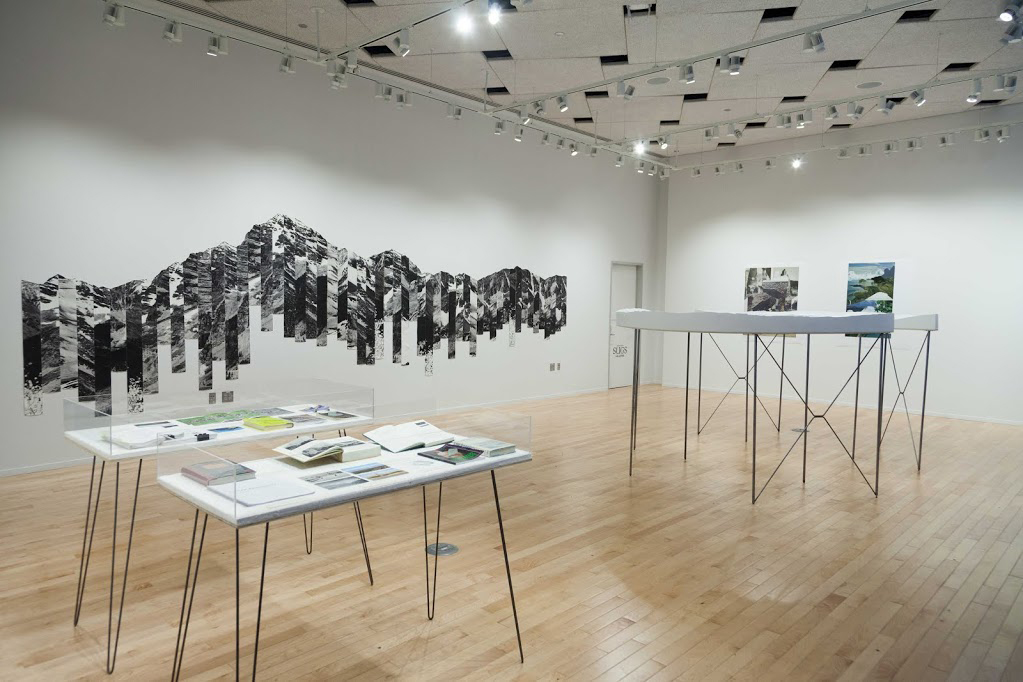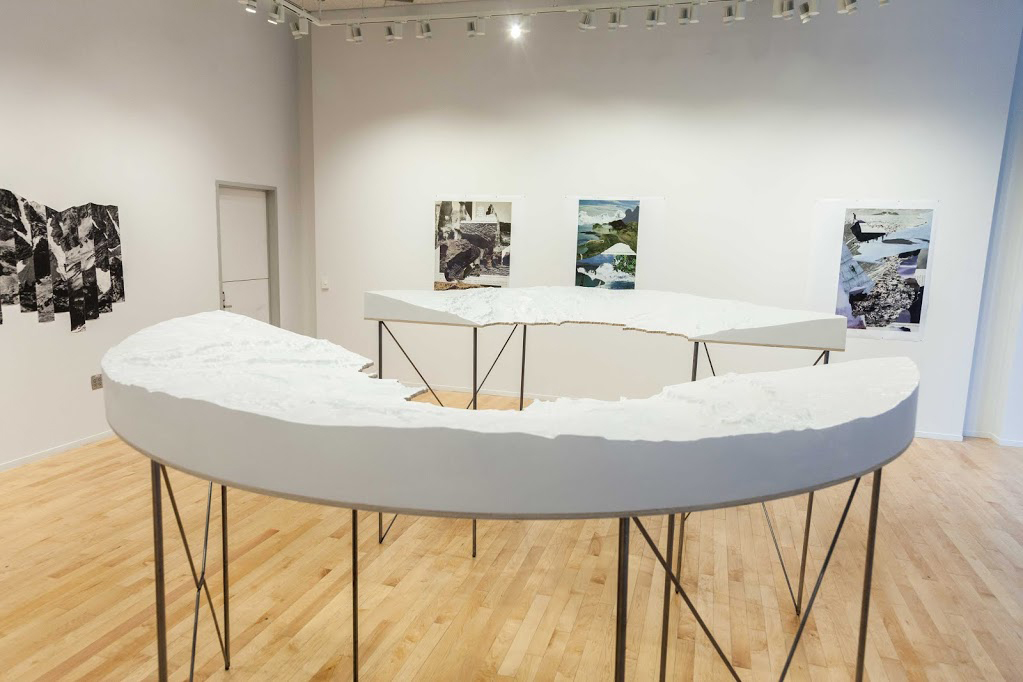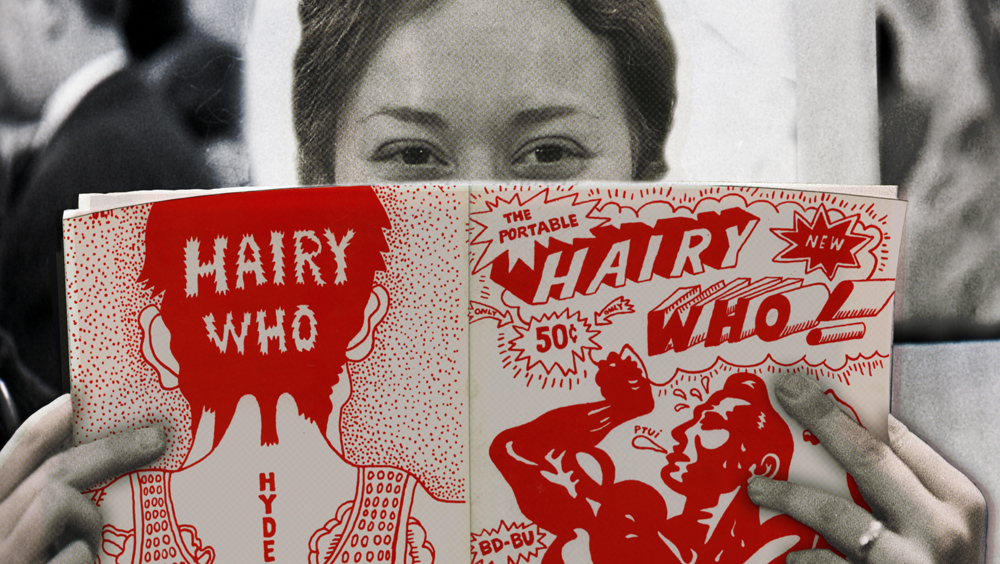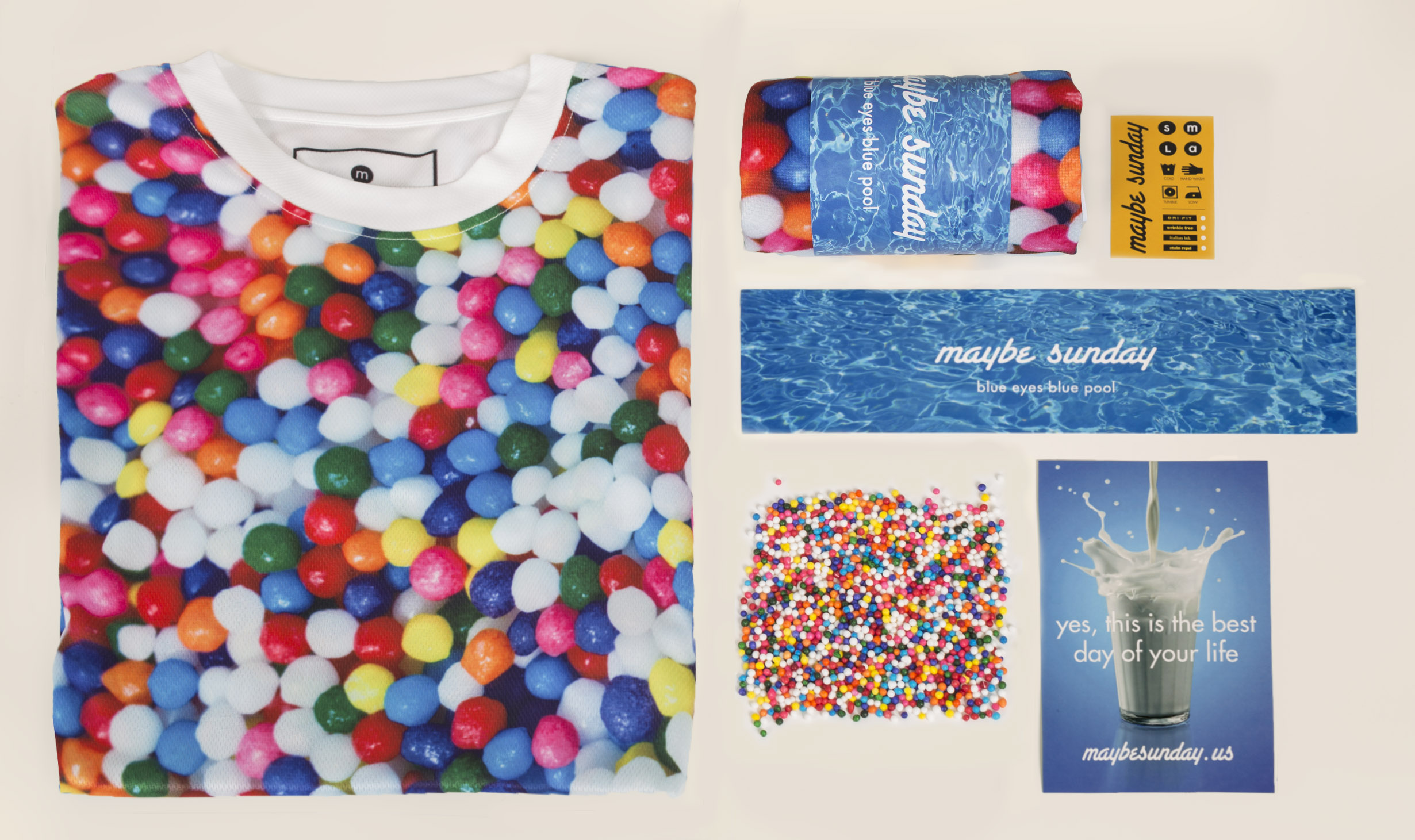SAIC’s Student Union Galleries Show Examines the American Myth

The borders of the western United States and their relationship to the country’s topography are unlike those of eastern states, which are most often shaped by water systems. The western half of the country is divided into blocks with stiff edges that scale mountain ranges and fall back downward, unwavering, to river valleys, pine forests and continuously shifting desert. At the severe slopes of the Continental Divide, a place many understand to be the opening to the final rings of the Occident, the parallels of New Mexico, Colorado, Wyoming and the United States-Canada borders drift easily over unforgiving terrain.
Borders are often fraught with tension, and are usually drawn against already existing divisions, physical barriers and politics. This is especially true in the western United States, often regarded as the last instance of Native Americans’ true sovereignty and to those outside of it, an unknown realm. The legacy of American narratives of settling and claiming territory in desolate and undeveloped areas is a mythology of domestication that continues to sustain itself within and toward the west.
Such an attitude toward the land and its inhabitants is reflected in the borders themselves. Those who drew those initial lines may never have set foot on these ranges. Borders that do not correspond with physical landmarks suggest a construction in ignorance of reality; demarcation based on coordinates rather than place. Plotting the boundaries of the west seems just as easy as erasing them.
![Lucas Briffa, Untitled [Mountain]. Photograph by Wenli Liu.](https://images.fnewsmagazine.com/2014/09/Lucas-Briffa.jpg)
By a similar token, a mountain range crosses the north wall of the gallery: Briffa’s large-scale collage-photo Untitled [Mountain] repeats the peaks and valleys of the depicted terrain in strips of equal width. Borders can be difficult things — physically and ideologically — yet this is cleanly assembled and adhered tightly against the wall. Each strip seems to be from somewhere else, creating the perhaps the “every-mountain” of the American West.
Near the gallery entrance, research materials housed in vitrines have been assembled by Alison Reilly and Matthew Coleman. This substantial part of the exhibition offers writings, sites from the canon of history and landscape studies. A corpus of detailed technical reports along with photographs and historical monographs orient the viewer toward a larger lineage of concern for the western landscape. Emerging from this fertile ground are transcripts of discussions between Coleman and Reilly, which become a starting point for the whole of West.

Finally, Elena Ailes’ two-part sculpture Bluewater, in the center of the gallery, is a familiar mountainous landscape on a plywood platform at about chest level. The space between the semi-circle halves is large enough to allow a passerby to be briefly surrounded with the slopes of mountains coming toward them. Jaggedness hovers over clean lines, and one can see the precision-cut plywood beneath. The piece’s overall slope is akin to the spillway of a dam, the even sides of the California Aqueduct, or a low-tide shoreline. Finished with a rocky texture, the sculpture plays with its own sense of control in a work that represents the organic but is man made, like cliffs of gunite on the set of a Western film.
The works in West play upon a sense of terra incognita that has defined the “Wild West” of America in ways that other parts of the United States have not. The show’s continuous re-staging of landscape and terrain evokes another quintessential pioneer idea: that we can tame the land, make it better, acclimate to it. West seems to be touching on these mythologies with an eye toward what other possibilities could be in store. The cuts and separations so evident in the exhibition present a potential for further re-shuffling, further re-imaginings and perhaps even a different future.







